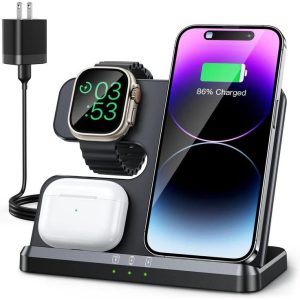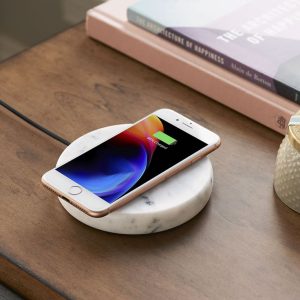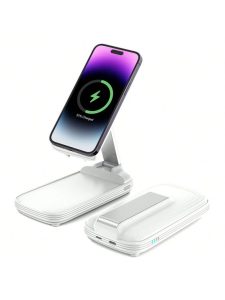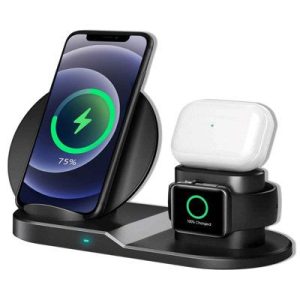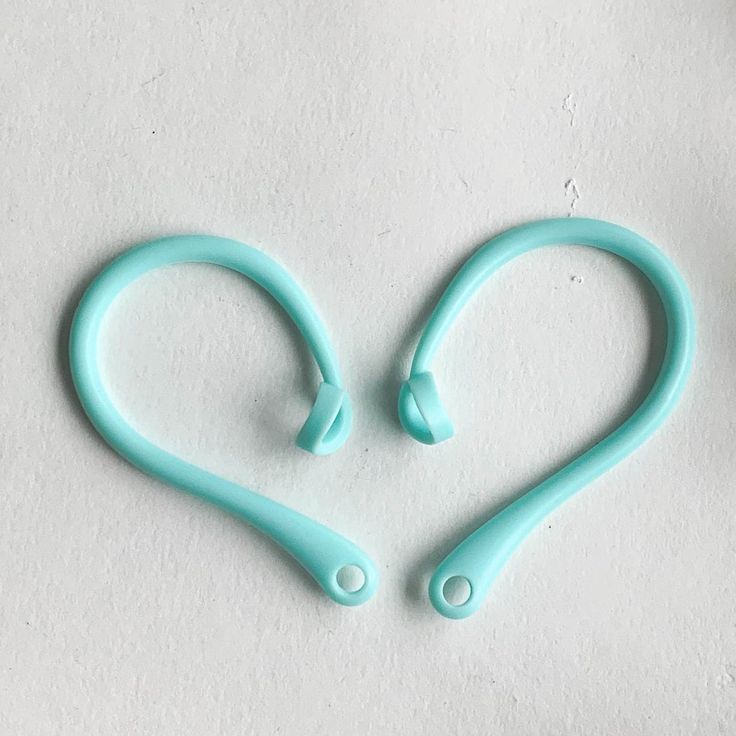Wireless charging is a convenient way to power your devices without fumbling with cables. But sometimes, things don’t go as planned. If your wireless charger isn’t working, don’t panic! Here are some troubleshooting steps to get your device juiced back up.
Before you begin:
-
Safety first! Make sure your wireless charger is from a reputable brand and has the appropriate safety certifications. Avoid using damaged chargers or chargers with exposed wires.
-
Identify your device and charger: Different devices and chargers may have specific requirements. Consult your device’s user manual or manufacturer’s website for recommendations.
Basic Checks: Power Up
-
Is it plugged in? Seems obvious, but double-check that your wireless charger is securely plugged into a working outlet.
-
Is the power on? Some wireless chargers have a power button or indicator light. Ensure it’s turned on or lit up.
-
Check the cable: If your charger uses a separate cable, inspect it for any damage or fraying. Try using a different cable if possible.
Placement Matters: Positioning Your Device
-
Sweet spot: Wireless chargers have a charging zone where your device needs to be placed for it to receive power. Refer to your charger’s manual or markings to locate the exact spot.
-
Case check: Some bulky cases might interfere with wireless charging. Try removing your device’s case and see if that resolves the issue.
-
Metal matters: Metal objects (like coins, keys, or certain phone cases) between your device and the charger can interrupt the charging process. Remove any metal objects from the vicinity.
Restart and Update
-
Device restart: Sometimes a simple restart of your device can resolve charging issues. Turn your device off completely and then power it back on.
-
Software update: Outdated software on your device might cause compatibility issues with your wireless charger. Check for and install any available software updates for your device.
Compatibility Check
-
Wireless charging capable? Not all devices support wireless charging. Verify if your device has built-in wireless charging capabilities. You can find this information in your device’s user manual or manufacturer’s website.
-
Charger compatibility: Double-check that your wireless charger is compatible with your specific device model. Some chargers might only work with certain brands or models.
Still Not Working?
If you’ve tried all these steps and your wireless charger is still not working, it might be a hardware issue. Here are some next steps:
-
Consult the manuals: Refer to the user manuals for both your device and your wireless charger for further troubleshooting tips specific to your models.
-
Contact support: Reach out to the customer support of the manufacturer of your wireless charger or device. They might be able to offer additional assistance or replacement options.
By following these steps, you should be able to identify the cause of your wireless charger malfunction and get your device charging wirelessly again. Remember, if you suspect any hardware damage, prioritize safety and consult a professional.
Going the Extra Mile: Advanced Troubleshooting
If you’ve tried the basic troubleshooting steps and your wireless charger is still not working, here are some additional things to consider:
-
Interference: Wireless chargers use electromagnetic fields to transfer power. Certain electronic devices or appliances might emit electromagnetic fields that can interfere with the charging process. Try moving your wireless charger to a different location away from other electronics.
-
Foreign Object Detection: Some wireless chargers have built-in foreign object detection (FOD). This feature can prevent charging if it detects any metal objects between the charger and the device. Even small objects like coins or keys can trigger FOD.
-
Debris Buildup: Over time, dust or debris can accumulate in the charging area of the wireless charger. Gently clean the charging surface with a dry cloth to remove any buildup.
Remember: Avoid using compressed air or liquids to clean your wireless charger, as this could damage the internal components.
Safety Matters
If you’ve gone through all the troubleshooting steps and your wireless charger is still not working, it’s best to stop using it. Here’s why:
-
Damaged Charger: A malfunctioning wireless charger could be a sign of internal damage. Using a damaged charger could pose a fire risk or damage your device.
-
Safety Certifications: Look for the manufacturer’s safety certifications on your wireless charger. If you can’t find them, it’s best to err on the side of caution and avoid using it.
Time for a Replacement
If you’ve concluded that your wireless charger is faulty, it’s time for a replacement. Here are some tips for choosing a new one:
-
Compatibility: Make sure the new charger is compatible with your specific device model.
-
Safety Certifications: Look for a charger with well-recognized safety certifications.
-
Reviews and Ratings: Read online reviews and check customer ratings before making a purchase.
By following these tips, you can choose a safe and reliable wireless charger that will keep your device powered up conveniently.
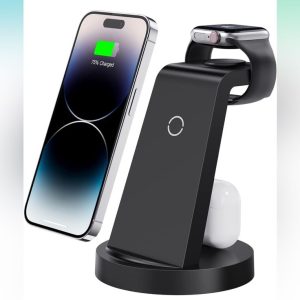
Wireless Charger Still Misbehaving? Seeking Professional Help
If you’ve exhausted all the troubleshooting steps above and your wireless charger remains non-functional, it’s time to seek professional help. Here’s what to do next:
-
Contact the Manufacturer: Look for the customer support contact information for the manufacturer of your wireless charger. Their representatives are familiar with the product and might be able to offer additional troubleshooting guidance or replacement options.
-
Retailer Assistance: If you purchased your wireless charger from a retail store, you can visit the store and explain the situation to the staff. They might be able to offer advice or direct you to the manufacturer’s customer support.
-
Online Resources: Search online forums or communities dedicated to your device or wireless charger brand. Other users might have encountered similar issues and found solutions.
Remember: When seeking help online, be cautious about following any advice that involves modifying or opening your electronic devices. Leave hardware repairs to qualified professionals.
Conclusion
Hopefully, these troubleshooting steps helped you identify the cause of your wireless charger’s malfunction and get your device charging again. If not, remember to prioritize safety and seek professional help. With a little effort, you can get your wireless charging setup back up and running smoothly.







